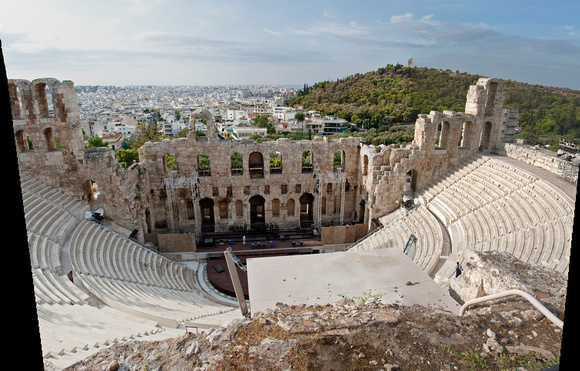The Odeon of Herod Atticus (Theatre)
The Odeon of Herod Atticus is a very impressive structure and partially restored to the point where it still holds some of Athens most prestigious events including music and theatrical presentations.
Built between 167 and 174 AD in memory of his wife Regillia, the theater seats 5,000 spectators and used to be very luxurious. It was originally roofed with cedar wood which was destroyed by fire in antiquity. Never the less it still remains an impressive structure with good acoustics.
Herodes Atticos, a philanthropist, was also a famous Greek orator, and very rich and liberal. He donated the theater to the city in memory of his wife Appia Annia Regilla who was Roman and a cult preistess.
The theaters stage is 116' wide and 26' deep. Beneath it was a reservoir as precaution in case of fire. Its floor of wood was accessed by 3 stairways, one of which remains. The stages background was decorated with a colonnade about 5 ' from the back wall which had 3 doors and 8 niches. The niches contained statues, probably those of the Muses.
Above the columns there was another story, a sort of balcony or narrow gallery on which the Gods appeared every time a Tragedy or Satirical drama was presented. At about 16' off the stage are a row of holes in which were placed the beams which supported the roof of ornamented and gilded cedar wood.
The Romans conducted their plays differently from the Greeks in that the actors performed on the very front part of the stage called the 'Proscenium' where as the Greeks played only in the orchestra. During the Roman occupation and since the Romans had somewhat different tastes than the Greeks, gladitorial combats or even sea battles could be performed.


